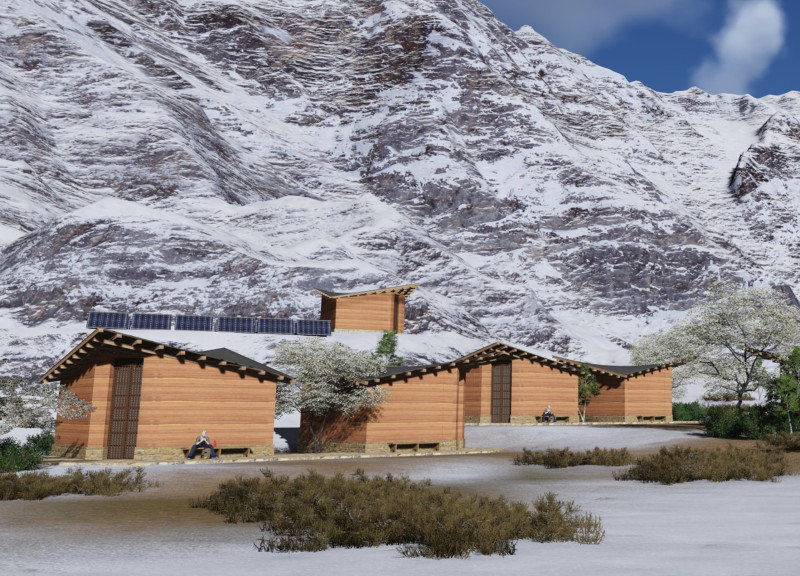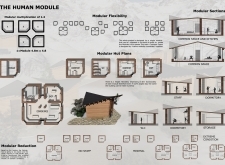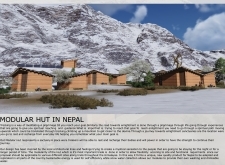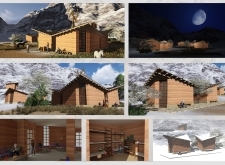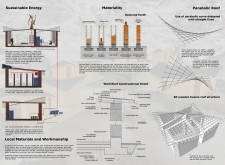5 key facts about this project
The building's exterior features a combination of natural and engineered materials, providing both durability and visual appeal. The use of locally sourced stone not only connects the structure to its geographical context but also enhances its thermal performance. Large expanses of glass are strategically placed to allow natural light to penetrate deep into the interior spaces, fostering a connection between indoor and outdoor environments. This choice of materials is significant as it supports the project's functional objectives while also promoting an eco-friendly ethos.
Inside, the project unfolds with an intelligent layout that prioritizes user experience. Open floor plans facilitate movement and interaction, while strategically placed partitions create a sense of privacy when needed. The interiors are characterized by a palette of warm hues and textures, which contribute to a welcoming atmosphere. Each room is designed to maximize usability, whether it is for collaborative work or quiet reflection. Noteworthy elements, such as custom millwork and integrated technology, enhance the functionality of the space without overshadowing its simplicity.
Unique design approaches are evident throughout the project. For instance, the incorporation of green roofs and living walls promotes biodiversity and contributes to energy efficiency. These features not only reduce the building's carbon footprint but also enhance its overall aesthetic appeal. Additionally, passive design strategies, such as orientation and shading devices, have been meticulously planned to optimize building performance throughout different seasons.
The architectural concept of this project emphasizes a seamless blend of modernity and context, allowing it to resonate with its surroundings. The careful consideration given to the site’s topography and existing landscape reflects a strong commitment to site-specific design. This approach not only respects the local environment but also enriches the user experience by integrating nature into the daily routines of the inhabitants.
Furthermore, the project serves a multifaceted role, functioning as a community hub that encourages social interaction while being adaptable for future needs. This flexibility is a crucial aspect of contemporary architectural design, as it allows spaces to evolve with the changing dynamics of their users. The thoughtful arrangement of communal areas, meeting rooms, and quiet zones showcases an understanding of diverse user needs, ensuring that the space caters to a wide range of activities.
The architectural plans reveal the meticulous thought that has gone into the design process, outlining the harmonious relationship between interior layouts and exterior forms. Architectural sections demonstrate the careful consideration of light and structural integrity, showcasing how the interplay of different elements creates a cohesive whole. A review of the architectural designs and ideas behind this project provides an enlightening glimpse into the creative process, reflecting the dedication to high standards of design and sustainability.
In exploring this project further, readers are encouraged to delve into the architectural plans, sections, and designs to gain a comprehensive understanding of its intricacies. The attention to detail and conscious choices made throughout are emblematic of a commitment to excellence in architectural practice. Engaging with these elements will offer valuable insights into the project's innovative approach, reinforcing its relevance in the broader context of modern architecture.


